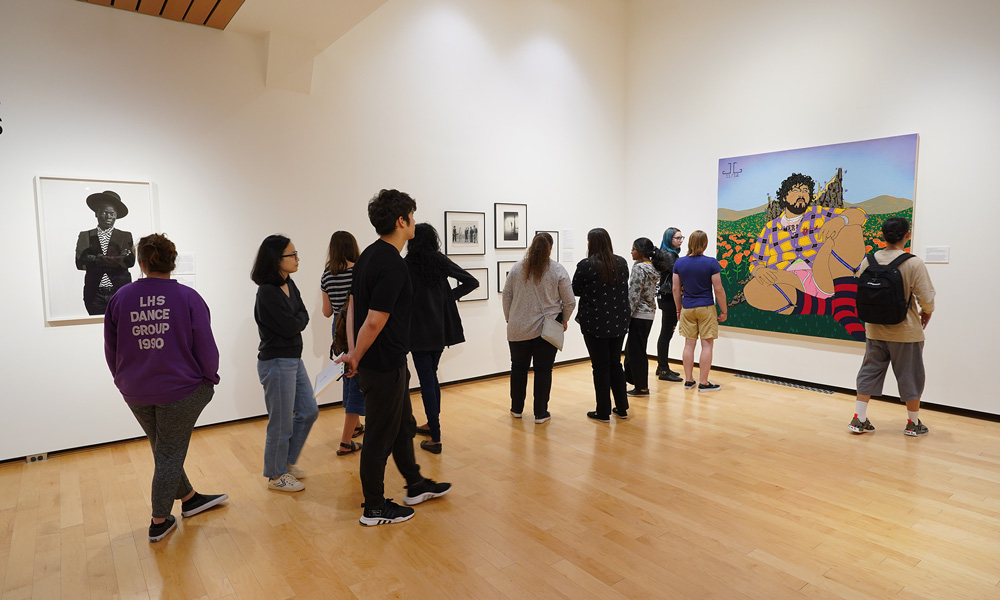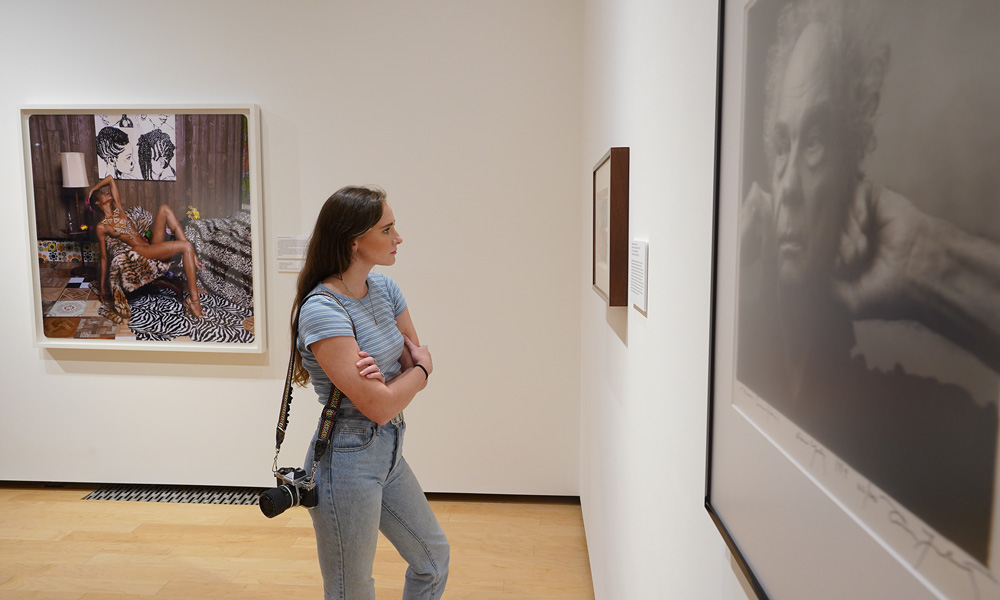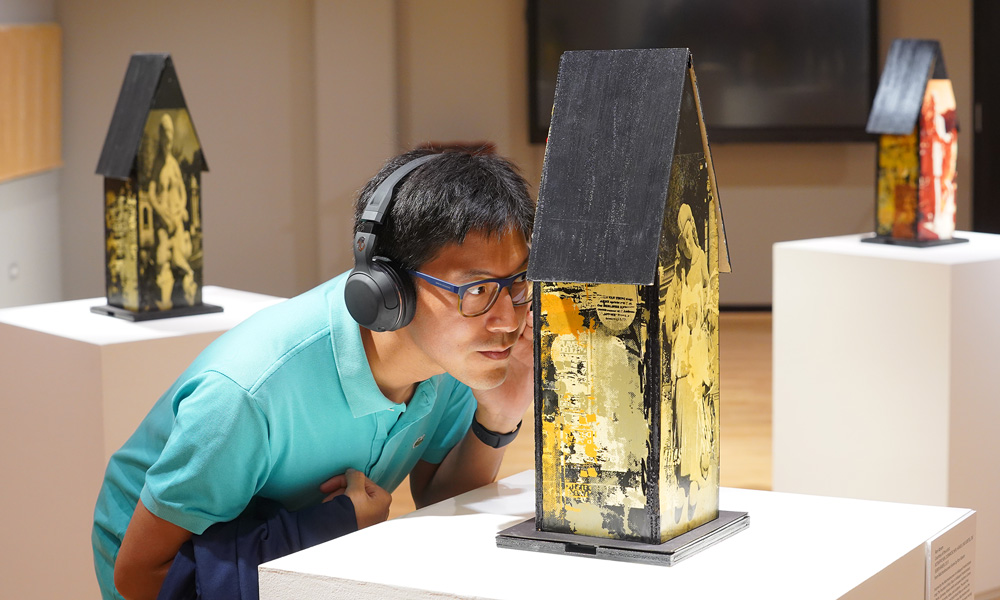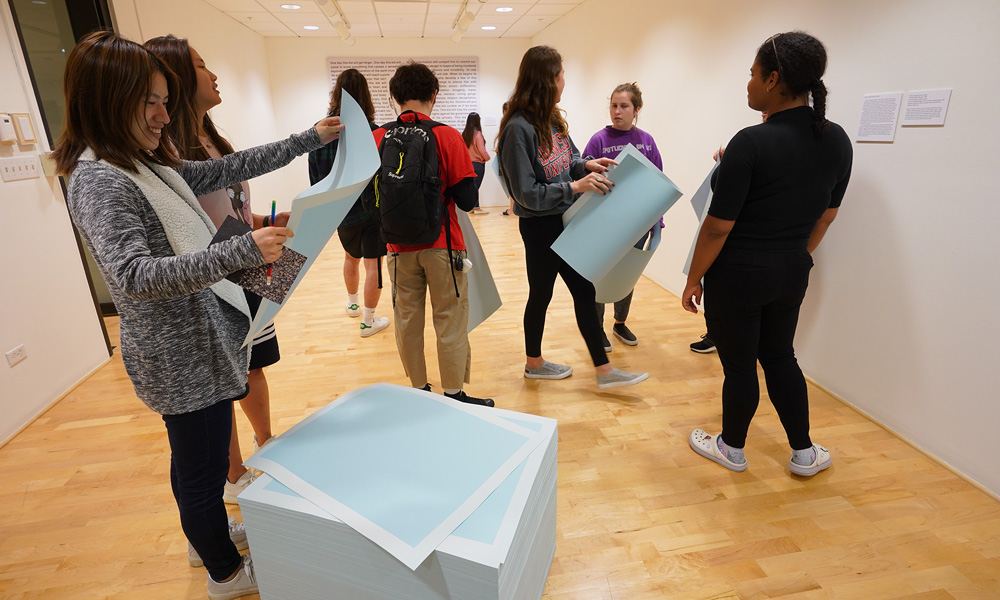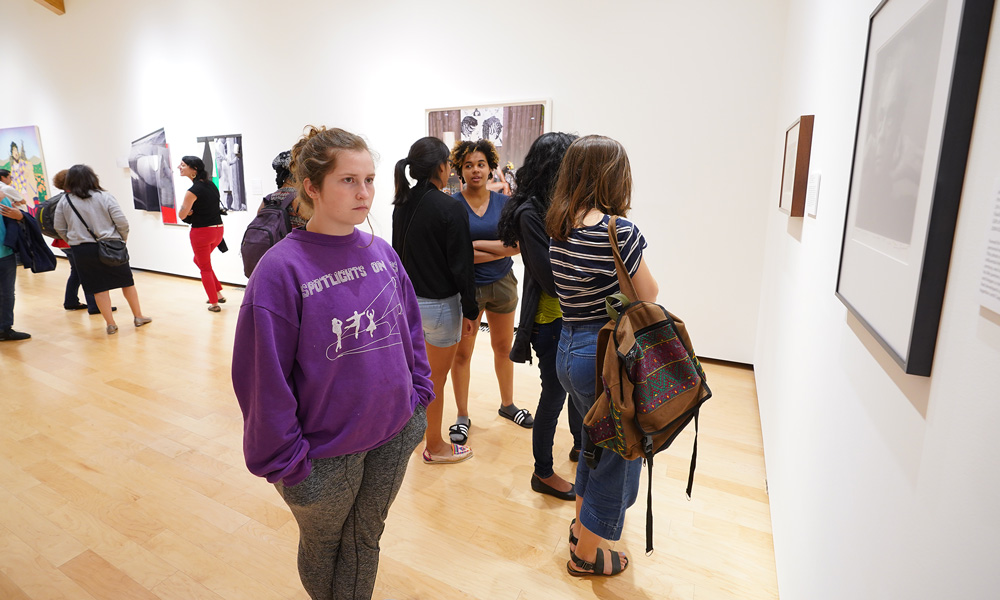In the fall of 2019, after more than five years of gathering and coordination with several departments across campus, the Denison Museum presents a curated exhibit of artists that explores the interaction between LGBTQ+ identities and their history, About Ourselves/Inside Ourselves.
As the first-ever queer exhibit mounted by the Denison Museum, the exhibit showcases events that are inherently political. Artists include the internationally renowned, such as Zanele Muholi and Anne Leibowitz, as well as historically significant artists like David Wojnarowicz and Felix Gonzalez-Torres.
Studio Art Professor Ron Abram calls the exhibition “a celebration of queer identity and community.. and a radically magical moment in Denison’s history for the museum to offer at the particular time with the opening of the Eisner.”
Megan Hancock, the museum curator of exhibitions and education, talks about the importance of the exhibit and its progress. “The exhibition is significant in part because, unlike a lot of LGBTQ+ shows, it eschews the typical focus on historic events (e.g., Stonewall or HIV/AIDS), taking a big step back so that the artists can speak for themselves, to tell us their own stories.”
She adds, “This emphasis on authentic story and identity encourages us to contemplate questions like, ‘Who do you identify with? What characteristics, beliefs, and connections do you share with those you identify with?’”
Thanks to loans from foundations, galleries, and sister institutions, the exhibition features well-known artists. In addition, the museum highlighted two Denison studio art faculty members: professors Sheilah ReStack and Ron Abram.
“Columbus and New York give students exposure to really great artworks. Many of those artists are in our museum right now,” ReStack notes, “The need to see yourself reflected in what you are looking at is so important, especially at such a crucial age of self-creation, as when you are at college.”
Her colleague, Ron Abram, applauds ReStack’s work (and the work of collaborator Dani ReStack) in the exhibit, which explores ideas in films.
“Dani and Sheilah’s works are in response to films they create together that intertwine ideas of journalism with allegory, metaphor and tactile wonderment… the inherently queer aesthetics represented in their collage/mixed media works presented here is exciting to see in dialogue with all the other artists Megan’s brought together for this show” says Abram.
Professor Ron Abram’s exhibit began with a 9-year relationship with Berlin, Germany when he was an artist in residence years back. While in the city, a friend told him to go to a park called Märchenbrunnen (translates to “Fairy Fountain” Park). It has 10 statues inspired by the Grimm Fairy Tales.
Abram’s own exhibit began with a nine-year relationship with Berlin, where he has spent time participating in artist residencies as well as living with his husband outside the academic year. While in the city in 2009, a friend suggested that he visit a park called Märchenbrunnen (which translates to “Fairy Fountain”). Located in what was East Berlin when it was a communist state, the park features 10 Grimm’s Fairy Tale statues. Abram visited the park for the first time in the winter when the statues were stored for the season in little wooden huts.
“I couldn’t see these statues, but I thought it was interesting that symbolic of repression, they were there contained inside these huts,” says Abram. “It seemed to me metaphorical of queer spirit that remains intact even when suppressed…but once repression is alleviated, things return to what they should be. This is the story of Berlin today, as well as my own story as a gay man coming out.”
The park has a history of being a queer space and a place where people could meet. It was featured in “Coming Out,” a 1989 East German film by Heiner Carow.
“My ongoing Märchenbrunnen project includes printmaking, sculpture, and animation,” says Abram. “In my huts, viewers look through peepholes and see queer interpretations of Grimm’s Fairy Tales. You peek inside repression to see a kind of magical space made of film, music, and puppets. It’s a surprise for the viewer, especially the audio component of the project.”
The musical aspect of Abram’s work was composed by his husband, musician ATO. Headphones are provided to fully interact with the work.
The exhibit has been visited by students from several different academic departments and Denison advising circles, as well as many from Columbus.
“Ideally, it will start conversations,” says Restack. “This is a show with a diversity of expression and mediums of expression. When I was a first-year student at my college, there would never have been a show like this. Let this work be a catalyst for conversation, dialogue, and inspiration.”


